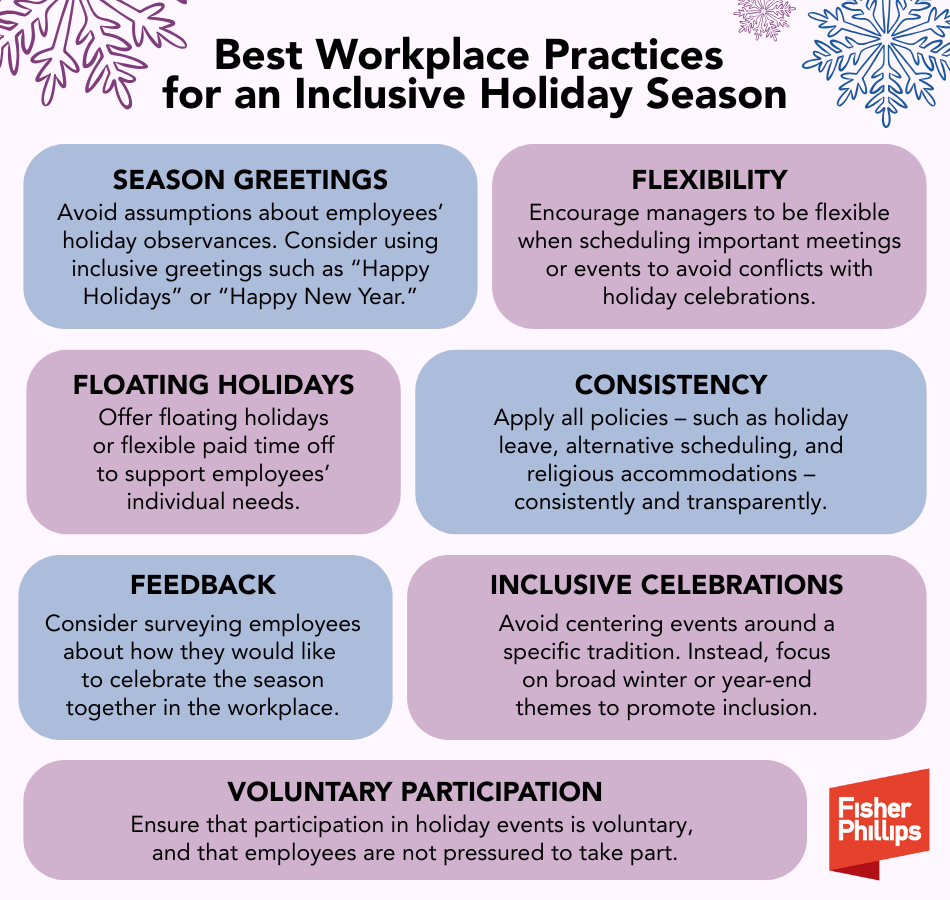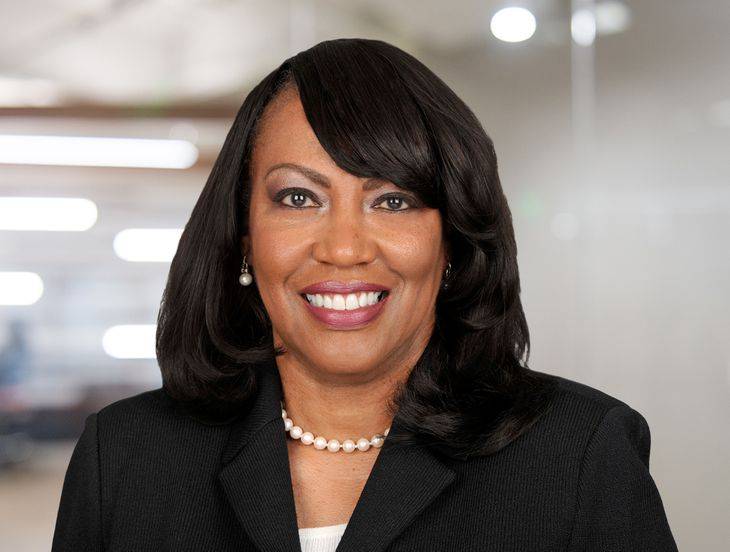A Holiday Recipe for Workplace Inclusion: An Employer’s Guide to Multi-Cultural Celebrations
Insights
11.21.25
Creating the perfect holiday dish takes thoughtful preparation, and so does building an inclusive workplace during the winter season. While employees should feel included year-round, the holidays offer a unique opportunity to blend different cultural, religious, and secular traditions into a respectful and welcoming environment. Whether your employees are celebrating Hanukkah, Christmas, Kwanzaa, another cultural observance, or none at all, you can take steps to acknowledge holiday celebrations while being respectful of employees from all backgrounds. Here’s a practical guide to help you understand and support your employees as they participate in a variety of traditions taking place in December and throughout the year.
Major Winter Celebrations and Observances
Many employees are focused on the holidays at the end of the year – and there are quite a few observances around the world that take place in the winter months. Here’s a list of the most common upcoming holidays that your employees are likely to celebrate along with the date they will be celebrated in 2025 or early January 2026.
- Saint Nicholas Day (Dec. 6 or 19): Celebrated in various European cultures as the feast day honoring the saint who was the inspiration for Santa Claus.
- Bodhi Day (Dec. 8): Buddhist holiday marking the day that Siddhartha Gautama attained enlightenment, is generally celebrated on December 8 each year.
- Hanukkah (Dec. 14 – 22): Jewish Festival of Lights commemorating the recovery of Jerusalem and subsequent rededication of the Second Temple.
- Las Posadas (Dec. 16 – 24): Latin American novenario celebrating the Christmas story.
- Yule/Winter Solstice (Dec. 21): Yule was originally celebrated by the Norse and Scandinavian peoples. Winter Solstice is a Pagan celebration on the longest night of the year.
- Christmas (Dec. 25): Christian celebration of the birth of Jesus Christ.
- Kwanzaa (Dec. 26 – Jan. 1): Celebration of African American culture ending in a communal feast called Karamu, typically on the sixth day.
- Boxing Day (Dec. 26): Originally celebrated in Great Britain on the second day of Christmastide as a holiday to give gifts to the poor.
- Ōmisoka (Dec. 31): A traditional Japanese celebration on the last day of the year.
- Three Kings' Day or the Feast of the Epiphany (Jan. 6): Marks the end of the Christmas season in Spain and Latin America.
Holidays and Traditions Throughout the Year
You should note that the examples listed above are the most common holidays that are widely celebrated around the world this time of year. Your employees may also celebrate other traditions or major cultural and religious holidays that take place at other times. You can review a list of major holidays and religious observations here.
You may want to ensure your managers know when these holidays occur and encourage them to build a supportive workplace culture that allows employees to observe or celebrate their important holidays.
Additionally, some employees may choose not to celebrate any holidays at all, either for religious or secular reasons. So, be sure to listen to your employees, refrain from making any assumptions, and follow inclusive practices.
Best Practices for Inclusive Workplaces
As we enjoy the holiday season, you should consider training managers on your organization’s best practices this time of year. Respecting the personal, religious, and cultural practices of your employees and clients is a smart way to ensure compliance with anti-discrimination laws and also a way to demonstrate that you care about your workforce. Some suggestions include:
- Season’s Greetings: Your managers should be aware of the best way to greet employees during December. That could mean, for example, saying “Merry Christmas” or “Happy Hanukkah.” But they should avoid assumptions about employees’ practices. It may be best to simply wish employees “Happy Holidays” or “Happy New Year.”
- Flexibility: During major holidays now and throughout the year, make sure your managers are flexible when scheduling important meetings or special events to ensure they don’t conflict with holiday celebrations.
- Floating Holidays: One of the best ways to ensure employees have time off to meet their individual needs is to offer floating holidays or flexible paid-time-off policies.
- Consistency: Be transparent and apply your policies consistently and fairly for any holiday leave, alternative scheduling, or religious accommodation requests. Ensure your workplace policies are clear, and employees know how to make requests.
- Feedback: Consider sending out a survey to see how employees want to celebrate together in the workplace. These can be anonymous to encourage candid responses. Maybe a big holiday bash is in order, or maybe employees prefer a Friday potluck where they share their traditions.
- Inclusive Celebrations: If you do host a seasonal gathering, avoid building events around a specific tradition. Instead, focus on inclusion with broad winter and year-end themes. You should also ensure that dietary restrictions and other employee requests are properly addressed. It’s important to foster an environment of respect and fairness. Click here for your office holiday party survival guide.
- Voluntary Participation: Inclusion in the workplace also means making office holiday celebrations optional. No matter the reason for declining to participate, make sure your managers aren’t forcing your team to participate and that no one – whether it’s a manager or co-worker – teases or question non-participants or otherwise make them uncomfortable. Everyone should feel welcome to celebrate (or not) in a way that’s right for them.
Conclusion
If you have questions about best practices to support your workforce during the holidays, contact your Fisher Phillips attorney or the authors of this Insight. We will continue to monitor developments in this area and provide updates accordingly, so make sure you are subscribed to Fisher Phillips’ Insight System to gather the most up-to-date information.
Related People
-
- Sheila M. Abron
- Partner
-
- Regina A. Petty
- Partner and Chief Diversity Officer
-
- Jennifer B. Sandberg
- Regional Managing Partner




